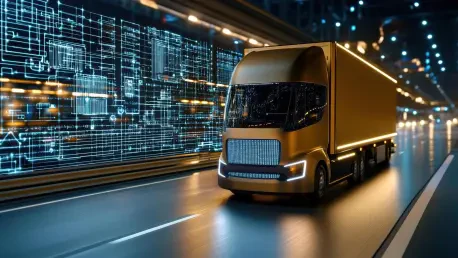A profound shift is underway in the freight industry as driverless trucks begin to traverse roads between major American cities such as Dallas and Houston, marking a significant milestone in the evolution of autonomous technology. Aurora Innovation has taken a pioneering role, launching SAE Level 4 driverless trucks capable of operating without direct human intervention. This technological leap raises intriguing questions about the future landscape of transportation and its potential impact on logistics and economic frameworks. As driverless trucks navigate these busy routes, their capabilities and benefits spark both excitement and uncertainty. This advancement highlights the potential for increased efficiency, safety, and a solution to the persistent driver shortage problem affecting global supply chains. The scenario presents an engaging narrative about how a longstanding industry may transform through artificial intelligence, sensor technology, and machine learning, creating new dynamics in freight and logistics.
Transformative Progress in Autonomous Trucking
The evolution of autonomous trucks has been characterized by incremental innovations, culminating in Aurora Innovation’s launch, which builds on an extensive period of research and real-world testing. The company has already completed around 3 million miles of delivery operations under varying conditions, demonstrating the robustness of its technologies. With safety drivers no longer required in the cab, these trucks signal a new era reminiscent of the shift seen with robotaxis. However, the distinction for autonomous trucks lies in their need for enhanced long-distance vision systems that can detect potential obstacles and traffic patterns well in advance due to the larger braking distances required compared to their robotic car counterparts. Aurora’s collaboration with their first commercial partners, Uber Freight and Hirschbach Motor Lines, further underscores the practical viability and economic incentive tied to this innovation. These collaborations focus on creating efficiencies in operations and addressing critical labor shortages in the trucking industry, potentially redefining logistics chains.
The southwest United States has emerged as an epicenter of autonomous truck development, providing a conducive environment that blends infrastructure capabilities with real-world testing challenges. Large and interconnected truck routes provide an ideal testing ground for assessing the performance and reliability of SAE Level 4 technologies. The region’s environment has pushed developers to design advanced sensor hardware that must anticipate conditions several miles ahead, dealing with both expected and unforeseen occurrences common in long-haul trucking. This focus not only enhances technological robustness but also provides insights into extending these solutions across more diverse and extensive routes in the future. This rigorous testing and development process is setting the stage for broader implementation across other regions and more complex routes.
Implications for the Freight Industry
Aurora’s approach is a reflection of a broader industry trend where multiple developers invest resources to bring autonomous trucking to life, with an eye on future expansion. This ambition sparks discussions about how autonomous trucks can reshape the freight industry structurally. With increased efficiency and diminished human error potential, a more resilient and reliable supply chain can be envisioned, enhancing operations that depend heavily on precise timing and coordination. Moreover, the technology presents significant implications for the ever-present driver shortage, offering a unique solution to what has been a persistent operational challenge. By reducing dependency on human drivers, companies can potentially streamline costs and improve their service offerings in a competitive landscape.
Despite these promising projections, the path to complete autonomous trucking adoption is not devoid of challenges. The scalability of these technologies across broader networks and regions remains a subject of investment and strategy as companies work to iron out the intricacies of seamless operation. This involves addressing complex regulatory frameworks and ensuring interoperability across various transportation ecosystems. The anticipation is that by further refining systems and expanding operational tests, autonomous trucks will stake a more significant claim in freight logistics, catalyzing industry changes unseen since the invention of the combustion engine. Stakeholders remain vigilant on the issue, preparing for how these innovations might not only streamline but redefine supply chain models.
Future Considerations
The freight industry is witnessing a major transformation with the introduction of driverless trucks on key routes like those between Dallas and Houston. Aurora Innovation is at the forefront, deploying SAE Level 4 autonomous trucks that operate without direct human control. This leap in technology prompts questions about future transportation landscapes and how it might affect logistics and economic structures. As these driverless trucks hit the highways, the excitement around their potential is palpable, yet uncertainty remains. The technology promises to enhance efficiency, improve safety, and address the persistent issue of driver shortages challenging global supply chains. This development offers a compelling tale of how an established sector might evolve through the integration of artificial intelligence, advanced sensors, and machine learning, reshaping the dynamics of freight and logistics. As these changes unfold, the industry must navigate the balance between technological advancement and the human element, creating new opportunities and challenges ahead.









